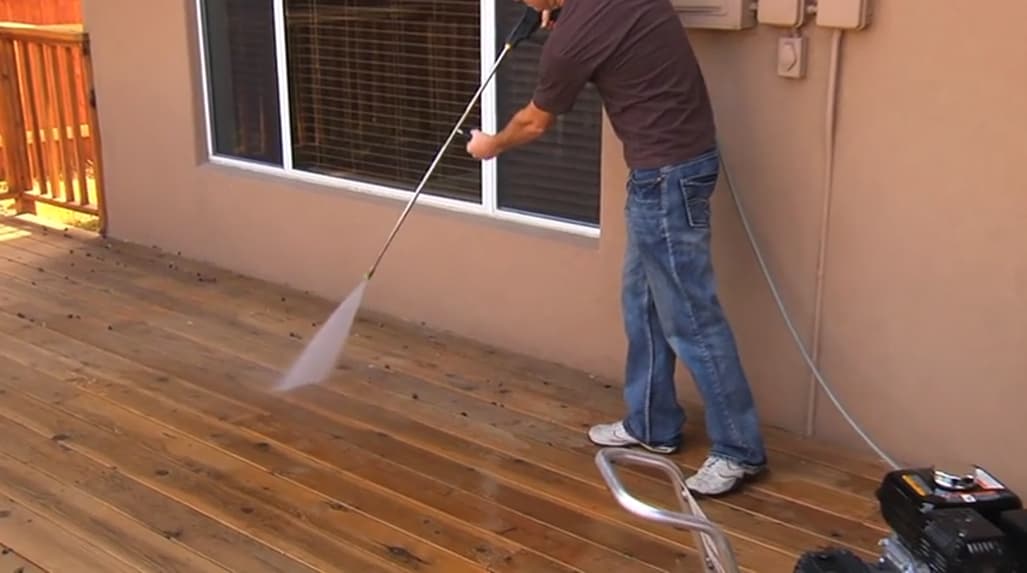
Power washing can breathe new life into wood decks, fences, siding, and outdoor furniture — removing years of dirt, mildew, and discoloration in minutes. But wood is a delicate material, and blasting it with the wrong pressure could leave permanent marks or even splinters. That’s why one of the most frequently asked questions is: What PSI is safe for cleaning wood surfaces? 🤔
Let’s break it down so you can clean wood safely and effectively — without causing damage. 🧼🔧
🪵 Why PSI Matters for Wood
PSI stands for pounds per square inch, and it measures the force of the water stream coming out of a pressure washer. The higher the PSI, the more powerful the blast.
Wood is porous and softer than surfaces like concrete or vinyl, so using a pressure setting that’s too high can:
- 💥 Etch or gouge the grain
- 🔪 Splinter boards
- ⚠️ Create uneven surface textures
- 🚫 Void warranties on treated lumber or finishes
Using the right PSI ensures you’re lifting away grime, not destroying the surface.
✅ Safe PSI Range for Cleaning Wood
Here’s a quick reference chart for safe pressure levels based on wood type and condition:
| Type of Wood Surface | Recommended PSI Range |
|---|---|
| Softwoods (pine, cedar, redwood) | 500–800 PSI 🌲 |
| Hardwoods (oak, teak, mahogany) | 800–1,200 PSI 🪵 |
| Aged or weathered wood | 500–600 PSI ⚠️ |
| Painted or sealed wood | 400–600 PSI 🎨 |
In general, stay under 1,200 PSI for all wood surfaces. For most residential jobs, 500–800 PSI hits the sweet spot between effective cleaning and surface safety. ✅
🧰 Tips for Safe Wood Power Washing
Pressure isn’t the only factor. The technique and tools matter just as much. Here’s what you need to know:
🎯 Use the Right Nozzle
- 40-degree tip (white) is ideal — it disperses pressure over a wide fan, minimizing risk
- Avoid 0-degree or 15-degree tips — they concentrate water too narrowly and can gouge wood
📏 Maintain Proper Distance
- Keep the nozzle at least 12 to 18 inches away from the wood
- Move in smooth, even strokes to avoid uneven cleaning marks
🔄 Go With the Grain
Always spray in the direction of the wood grain to maintain a smooth finish and avoid tearing fibers.
💧 Soak First
Lightly wet the surface before applying detergent. This softens dirt and prevents absorption of harsh chemicals.
🧴 Use Wood-Safe Cleaners
Choose biodegradable, wood-safe detergents designed to clean mildew, algae, or gray weathering without damaging natural oils.
⚙️ Should You Use a Gas or Electric Washer?
Both types can work, but here’s the difference:
- Electric pressure washers (1,300–1,700 PSI) are ideal for wood — they naturally fall in the safe PSI range.
- Gas pressure washers (2,000–3,000+ PSI) are much more powerful and can easily damage wood if you’re not extremely careful. Use a pressure regulator or wider spray tip.
If you’re new to power washing, an electric model is more forgiving. ⚡🧽
Browse Amazon Here For Top Rated Power Washers And Accessories
🧪 Test Before You Blast
If you’re unsure about your settings or wood type:
- Pick a small, hidden test area
- Try your setup on low pressure with a wide nozzle
- Check for any damage, lifting fibers, or splintering
If the wood looks clean and undamaged, proceed with confidence. If not, reduce the PSI or back off the distance. 👨🔬🔍
🧼 Aftercare for Wood Surfaces
Power washing is only the first step. After cleaning wood, consider these follow-ups:
- Let it dry completely (at least 24–48 hours)
- Sand lightly if fibers have lifted (called “furring”)
- Apply a wood brightener to restore natural color 🌟
- Seal or stain the surface to protect it from UV and water damage ☀️💦
Skipping these steps can lead to weathering and short-lived results — especially for decks and fences.
🛑 Common Mistakes to Avoid
- ❌ Using max pressure “to get it done faster”
- ❌ Holding the nozzle too close
- ❌ Spraying perpendicular to the wood grain
- ❌ Leaving detergent on too long or letting it dry
- ❌ Not rinsing thoroughly
These mistakes can cause surface damage or require expensive repairs, turning a DIY win into a headache. 😓
🧠 Pro Tip: Use a Wood-Specific Attachment
Some pressure washers come with deck cleaning attachments — these distribute water evenly in a circular pattern and reduce streaks. They’re great for beginners or anyone cleaning a large wooden area like a deck or dock. 🌀🛠️
🏁 Final Thoughts
So, what PSI is safe for cleaning wood? The answer is:
- 500–800 PSI for most jobs
- Never more than 1,200 PSI
- Always paired with the right nozzle, distance, and technique
Wood is beautiful — but it’s also vulnerable. With the right settings and approach, power washing can refresh it without harming it. So whether you’re cleaning a sun-soaked deck or a mossy old fence, take your time, test first, and treat your wood with care. 🌲🧼💪
Browse Amazon Here For Top Rated Power Washers And Accessories






